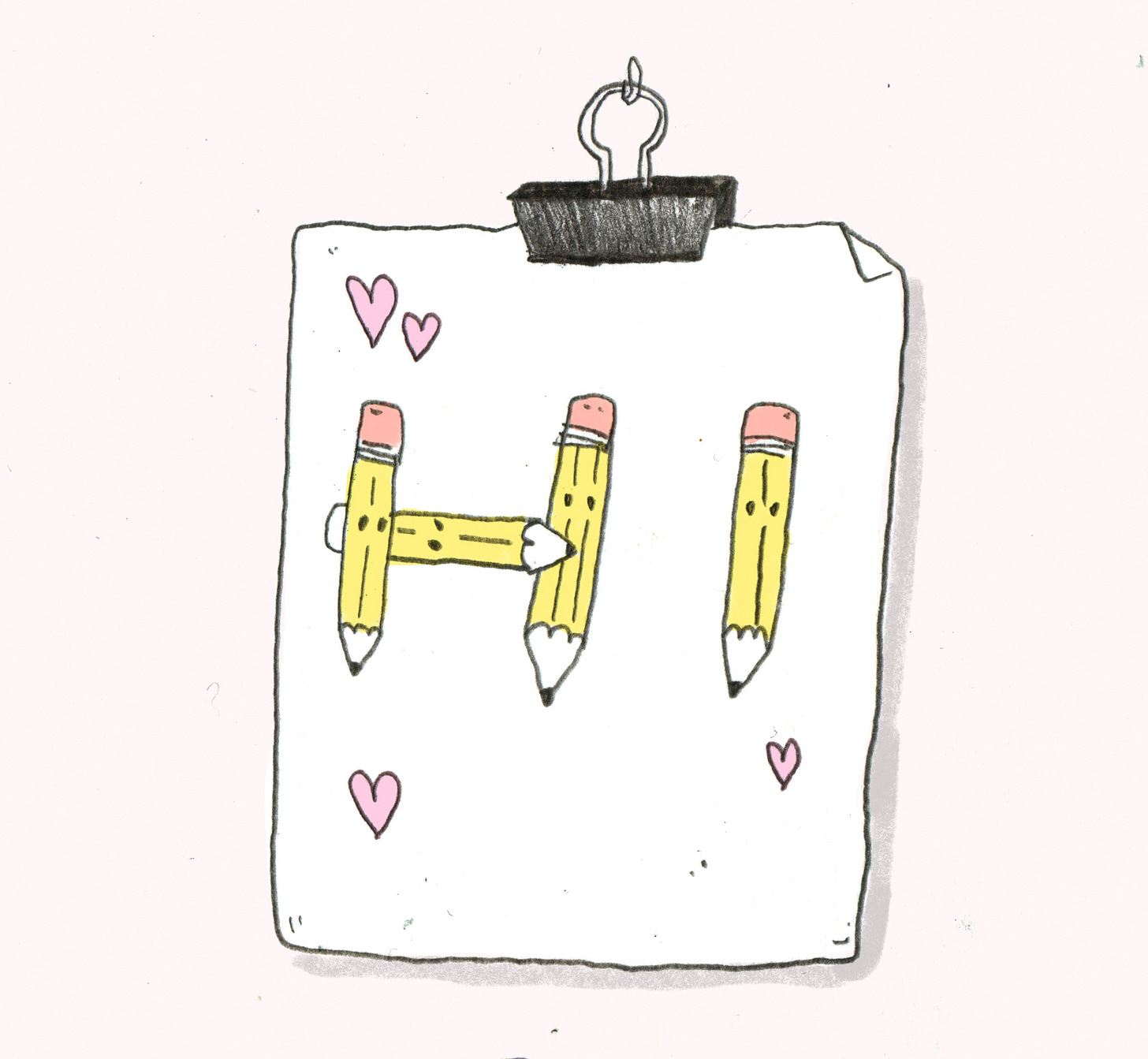2b or not 2b
The exceedingly interesting history of the pencil
Hi.
A grounding practice I have when I am feeling not too fond of the world is to get lost in the drama of small facts. I like to look up the etymology of a word or the origin of a particular object, something I might otherwise take for granted, and fall in love with a small detail I never knew. It reminds me how inherently poetic the world is and, much like the meditative practice of tracing the outline of ones fingers while counting to five, you simply do not have room to ruminate on your own nonsense when you are learning that in the 1930s, German pen company Pelikan developed a type of “ink bleach,” originally referred to as Tintentod or ink death.
Today we will delve into the poetic and rather dramatic world of the pencil.
This original drawing is available to purchase here.




